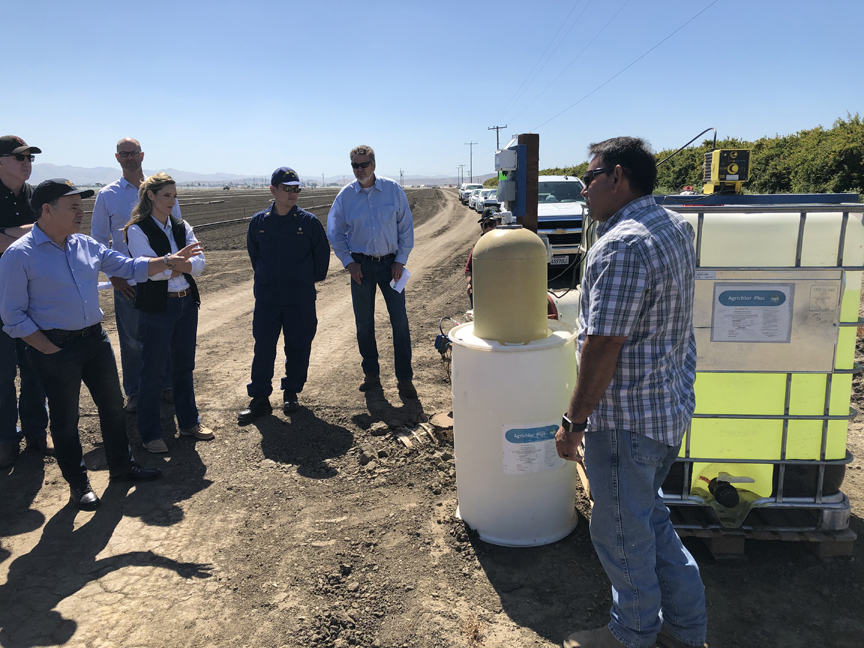
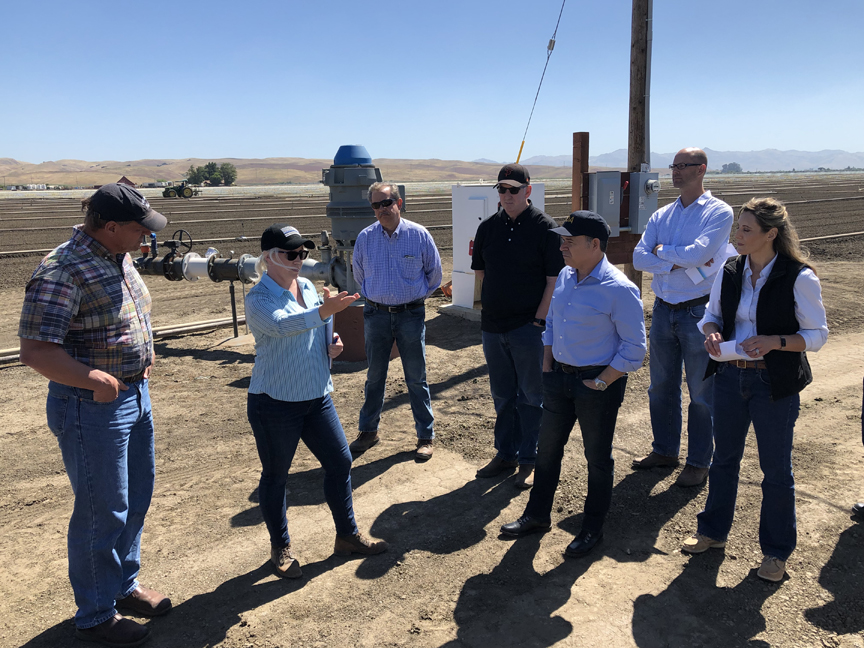
Click here to learn how CDFA’s Produce Safety Program helps bring California produce farms into compliance with the FDA’s Produce Safety Rule.



Click here to learn how CDFA’s Produce Safety Program helps bring California produce farms into compliance with the FDA’s Produce Safety Rule.

UC Riverside is testing whether a sesame seed-sized wasp can control a pest that could seriously damage California crops including wine, walnuts, and avocados.
The pest, a sap-sucking spotted lantern fly, is originally from China and was first detected five years ago in Pennsylvania. Since then, large populations have spread rapidly to grape vines, apple trees, and other plants in New York, Delaware, New Jersey, Maryland, and Virginia.
Experts believe the lantern fly is likely to make its way to California soon.
Mark Hoddle, director of the Center for Invasive Species Research at UC Riverside, explains why the lantern fly is so harmful.
“It secretes copious amounts of “honeydew,” a waste product that encourages black, sooty mold and damages a plant’s ability to grow,” he said. The honeydew also attracts undesirable insects such as ants and hornets.
The impacts could extend well beyond California. According to industry reports, the state is the world’s fourth-largest wine producer, selling an estimated $35 billion domestically and exporting $1.5 billion annually.
Around 44% of nonnative insects arriving in California were first established elsewhere in the U.S. Given the speed with which the spotted lantern fly has spread, Hoddle realized the state needed a proactive approach to this predictable problem.
“Normally, when a bug shows up, we try to contain and eradicate it,” Hoddle said. “But by the time the population is found, it tends to already be widespread and hard to handle.”
The state Department of Food and Agriculture recently granted Hoddle $544,000 to test whether a tiny parasitic wasp, also originally from China, could be the solution to the looming problem. Hoddle explained that the wasp has a needle-like appendage it uses to lay its own eggs inside the lantern fly’s eggs. While developing, the wasp larvae eat and kill their hosts, and then emerge after chewing escape holes through the lantern fly eggs.
These wasps pose no threat to plants or people, but before they can be used to control the lantern fly, Hoddle must prove they won’t cause unnecessary harm to other native insects. “We can’t just release a Chinese parasite into the wild in California,” Hoddle said. “Chances are low it will harm the wrong targets, but we have to be sure.”
Safety testing will be conducted in a highly secure quarantine facility at UC Riverside. Native lantern flies, the subjects of safety testing, will be collected from natural areas in California and southern Arizona this summer.
Though the wasp is now being evaluated as a biological control on the East Coast, populations of lantern fly there have already grown large enough to cause significant concern for the grape industry, Hoddle said.
A spotted lantern fly’s wingspan is about 1.5 inches, and at most they can fly a few hundred feet at a time if they’re assisted by the wind. The lantern fly has spread so fast in part because the females lay eggs on nonbiological materials, such as train cars, motor homes, wooden pallets, and trucks that inadvertently move them into new territories.
“Anyone on the East Coast driving to California should be especially vigilant about checking their vehicle for egg masses before they make the journey,” Hoddle warned. “Failing to notice them could have serious consequences.”
Hoddle’s testing will take roughly three years, and he estimates that this may be around the time when the wasps will be needed in California. “We hope to be ready to release these wasps immediately when the spotted lantern fly shows up, giving us a really strong head start on the invasion,” he said.
By Mark Schapiro
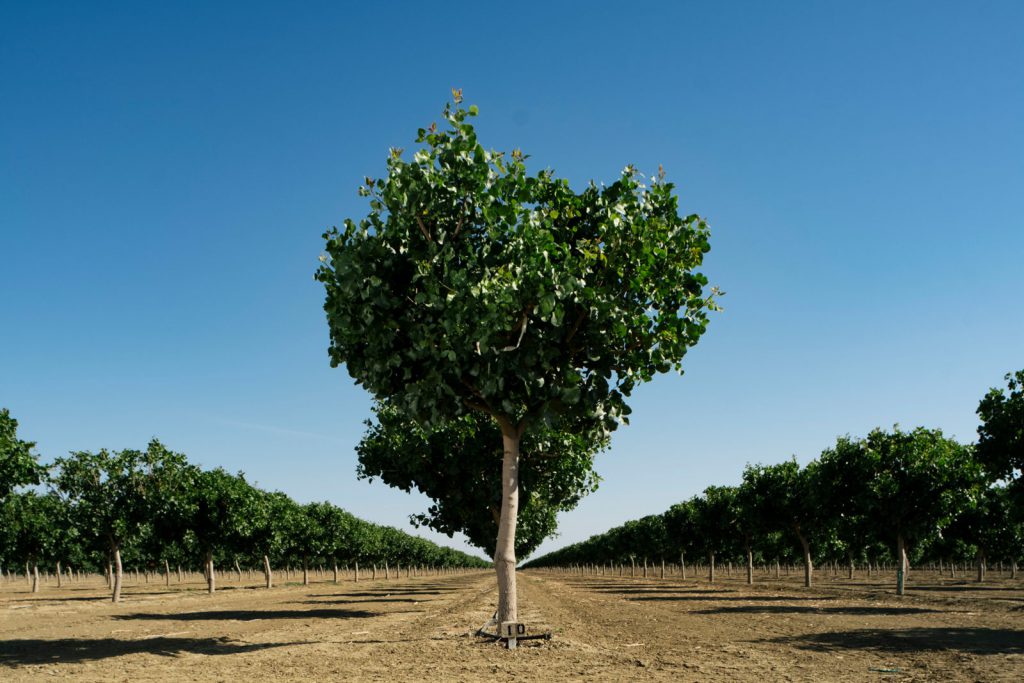
Inside a climate-controlled laboratory at the Duarte Nursery outside Modesto, an experiment is taking place that could help determine what food we will eat for decades to come. Rows of steel racks contain numerous tiny almond, apple, walnut, pomegranate, pecan, avocado, fig, and pistachio trees in small translucent plastic cylinders. The saplings, planted in a high-nutrient agar mix that accelerates growth, are no more than two inches high and a few weeks old. Each is being subjected to versions of the stresses experienced just outside these walls in fields across the Central Valley: declining levels of water, escalating levels of salt. The big overarching, if unmentionable, force driving these experiments is climate change, which is beginning to roil the Central Valley.
Duarte, one of the largest commercial nurseries in the world, specializes in tree nuts and fruits, which have boomed across the valley in recent decades. Founded four decades ago, the nursery grew rapidly as water piped into the valley from the Sierras gave birth to the most bounteous center for agriculture in North America. The nursery now sprawls over 200 acres in the town of Hughson, just outside Modesto. Things began to change about a decade ago, according to John Duarte, the nursery’s president.
When I first met Duarte back in 2012, he resisted calling the shifts he was seeing climate change: “Whether it’s carbon built up in the atmosphere or just friggin’ bad luck,” he said then, “the conditions are straining us.” Today, he still avoids the climate change label. (“You should meet my daughter; I think she agrees with you on the climate business,” he told me recently.) But even seven years ago, Duarte was on the forefront of researching tree varieties suited to a hotter, drier, saltier future.
Also in the “Reckoning in the Central Valley” series:
“The Disrupters Meet the Disruption:
How Tech Aims to Save Big Ag From Climate Change”
Trees present a particular challenge: Conditions shift, but the trees can’t move. A fruit or nut tree planted today may, depending on the species, be ill-suited to climatic conditions by the time it begins bearing fruit in five or ten years. So the question Duarte is trying to answer, the one bedeviling farmers across the valley, is, what to plant today that can thrive and bear fruit over the next quarter century or more?
“Everyone,” Duarte said, “is thinking about the impacts of warm winters and not enough water.” Valley temperatures are predicted to rise between 3.5 and 6 degrees Fahrenheit by 2100, while periods of extreme heat are expected to lengthen. Even now, it’s often not cold enough in winter to permit trees’ metabolism to slow down, a process critical to the spring flowering that produces fruits and nuts later in the season. Irrigation water is becoming saltier, too. Desperate farmers drilling ever-deeper wells are pumping up saltier water. And a new state law, the Sustainable Groundwater Management Act, will likely serve as a catalyst of change. Starting in 2020, it will regulate how much water farmers can withdraw from the Central Valley aquifer. The law promises to shake up the methods and business of valley agriculture.
The lessons learned here, or not learned, have implications for agricultural regions elsewhere, from the American Midwest to North Africa, southern Europe and southwest China. These breadbaskets are already experiencing similar extremes of heat, drought, and flood, and new pests and diseases.
Climate change is revealing the vulnerabilities of an industrial agriculture system that relies on predictability. And it’s shining a light on alternative growing practices that are potentially more resilient to these environmental shifts.
“When I drive to the Central Valley, I get goose bumps; I feel the urgency,” says Amélie Gaudin, an agronomist at UC Davis who works with many Central Valley growers on improving soil quality. “I see an agriculture that is basically hydroponics. It’s like a person being fed/kept alive by an IV.”
“What happens when you no longer have the sugar-water?” she adds.
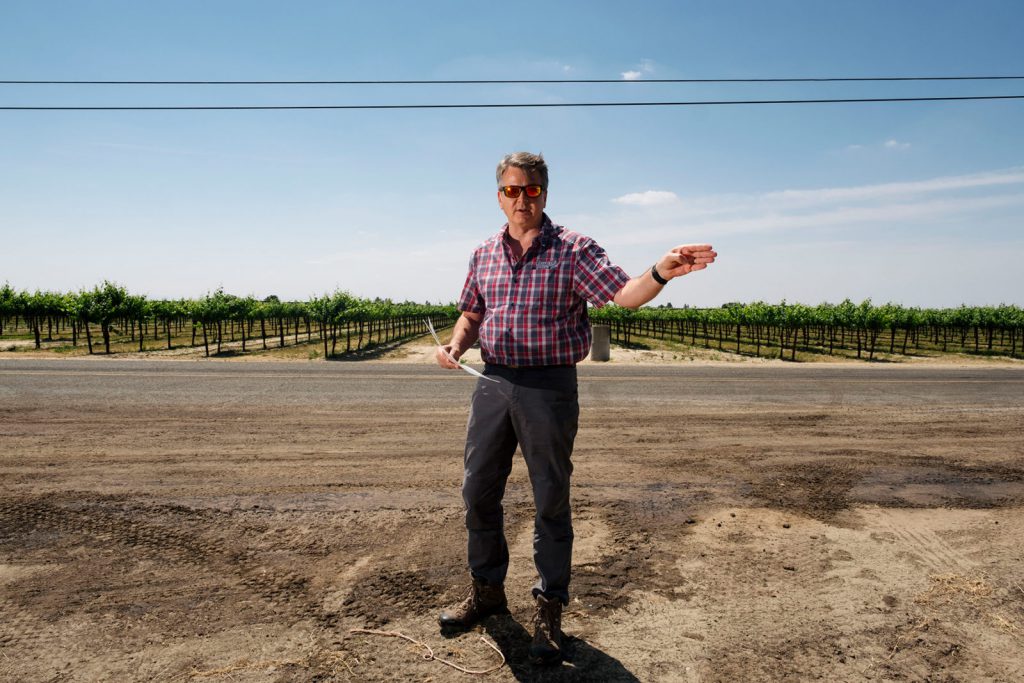
ifty-nine years ago, the state of California authorized construction of a sprawling network of dams, pumps, and canals to deliver water from the peaks of the Sierra Nevada to a valley that was once the bottom of the ocean. Swamps were drained. Land was cleared. The California Water Project transformedthe interior of the state. A once-dry savanna with occasional wetlands was geared toward one activity: cultivating food. A $17 billion agricultural powerhouse, the leading producer of most vegetables and fruits in the U.S., was born. But it was built on the fragile assumption that the snow would keep falling on the Sierras in the winter and melt in the spring, just in time for the dry season in the south, and that farmers could always pump groundwater from one of the nation’s largest aquifers when those sources went dry.
“California is buffered by irrigation,” says Charlie Brummer, director of the Center for Plant Breeding at UC Davis. “To the extent we have irrigation water, the impacts of climate change are muted.” But as the quantity and timing of melting snow water became more erratic, farmers made relentless runs on the underground water, creating a massive deficit. During the most recent drought, nearly 2 million acre-feet of water came out of the ground every year without being replenished.
In 2015, Governor Jerry Brown signed the Sustainable Groundwater Management Act, or SGMA, the state’s first effort to reverse rapid groundwater decline. Implementation begins next year when California will start assigning each farm a water limit that will grow progressively tighter over the next two decades. The goal is to make the aquifer “sustainable”—the water withdrawn should not exceed the water flowing in—by 2040.
The Public Policy Institute of California estimates that at least 500,000 acres of valley farmland will be fallow as a result of the SGMA by 2040—about 10 percent of the valley’s 5 million cultivated acres. That could be in addition to roughly 500,000 acres taken out of cultivation when surface water allocations from the aqueduct plunged during the recent drought. Fully implemented, SGMA will translate into an up to 75 percent drop in water usage for some areas of the valley, according to David Orth, who previously worked on the SGMA as the chairman of the Groundwater Committee of the Association of California Water Agencies. “That’s a huge change,” he says.
Last year, University of California scientists published a paper in Agronomy suggesting that the climatic shifts underway challenge the Central Valley’s long-term life span as an agricultural powerhouse. They predicted declines of more than 40 percent in avocado yields and up to 20 percent in oranges, grapes, walnuts, and almonds by the 2060s. Strawberry, cherry, and apricot yields may also shrink.
Between 1950 and 2009, those all-important “chill” hours had already declined by as much as 30 percent, according to a California Department of Food and Agriculture study. “If trees haven’t had that low-chill period when they wake up in the spring,” says Mae Culumber, a nut crop adviser at the University of California’s Division of Agriculture and Natural Resources, “it’s like being up all night and then trying to go to work.” They don’t get the metabolic slowdown necessary for the spring blooms that deliver fruit and nuts. Researchers have already observed that cherry, apricot, pear, apple, pecan, and almond trees are often less productive than they used to be.
When these stresses ratchet up, when things get too salty, too hot, or too dry, or an orchard is past its prime, farmers call on Zach Fowler.
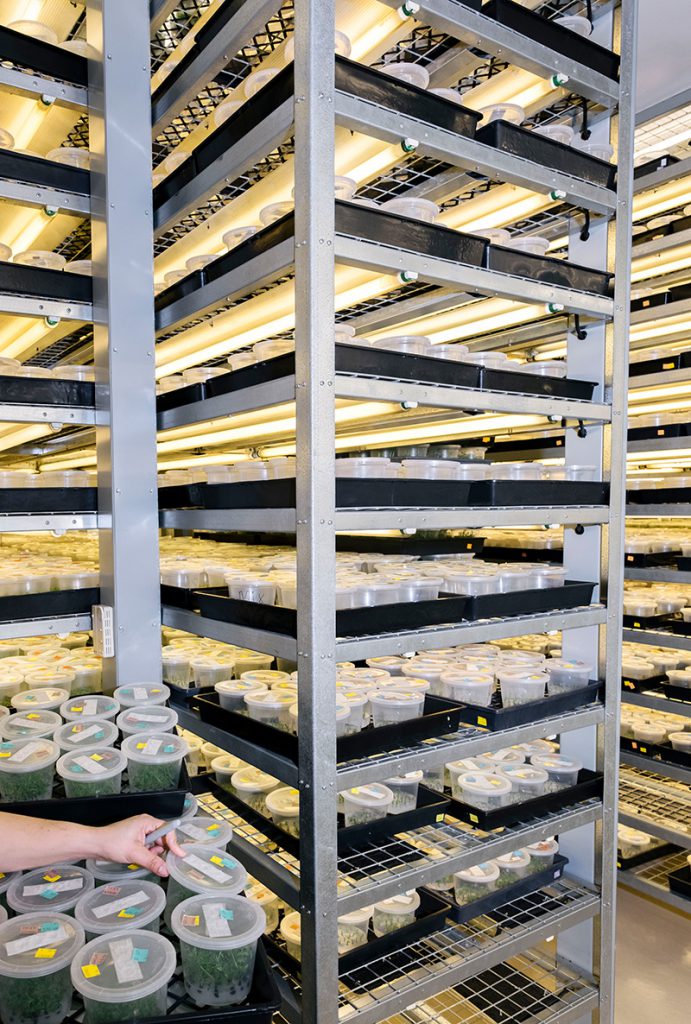
Zach and his brother Garrett run Fowler Brothers Farm Management. They specialize in tearing down orchards. Business is booming as the many almond orchards planted a quarter-century ago reach the end of their natural lifespan, and more extreme weather stresses more orchards. In April, I met Zach at his company headquarters in Waterford, about 15 miles east of Modesto. We headed across the rolling brown hills in his pickup until we arrived at a field of mostly dead almond trees, still standing, gray and black like apparitions. There I watched “orchard grinding,” as he calls it, in action. A “ripper” tractor outfitted with two long steel forks tore entire trees out of the ground, piling them at the end of each furrow. Another hulking orange machine called an excavator grabbed about a half-dozen trees at a time in enormous steel claws and dropped them into a red machine called a grinder. Its roaring, rapidly spinning blades can turn 15 acres of almond orchard into wood chips in a day. And it does so day after day.
The previous years of drought stressed out many orchards, Fowler said as we barreled along in his pickup truck. In the orchard we’d just visited, this year’s torrential rains and strong winds knocked trees over—they’re planted with extremely shallow roots—and oversaturated the soil. “Already,” he said, “they were not producing like they once did.”
He added, “I believe in climate change. We’re having severe weather for longer periods. And the swings from cold to warm and back again, I’ve never seen anything like it.”
Fowler and his brother took out a lease on 40 acres of almonds in 2016. At the time, they thought they could count on well water if necessary.
But all that will change when the SGMA water limits go into effect. The Fowler brothers have an escape clause in their lease, which allows them to exit if water shortages threaten the orchard’s viability. He hopes he doesn’t have to invoke it.
Fowler’s predicament is shared by many valley farmers. The SGMA hangs over them like the sword of Damocles. And yet many are still choosing to plant almond trees. As David Orth puts it, “The calculus now is, ‘If I plant almonds today, even if water runs out in 2030, I can still get profits out of it by then.’”
Some forward-thinking farmers, meanwhile, are abandoning almonds and turning to a nut native to the hot, dry Middle East: the pistachio.
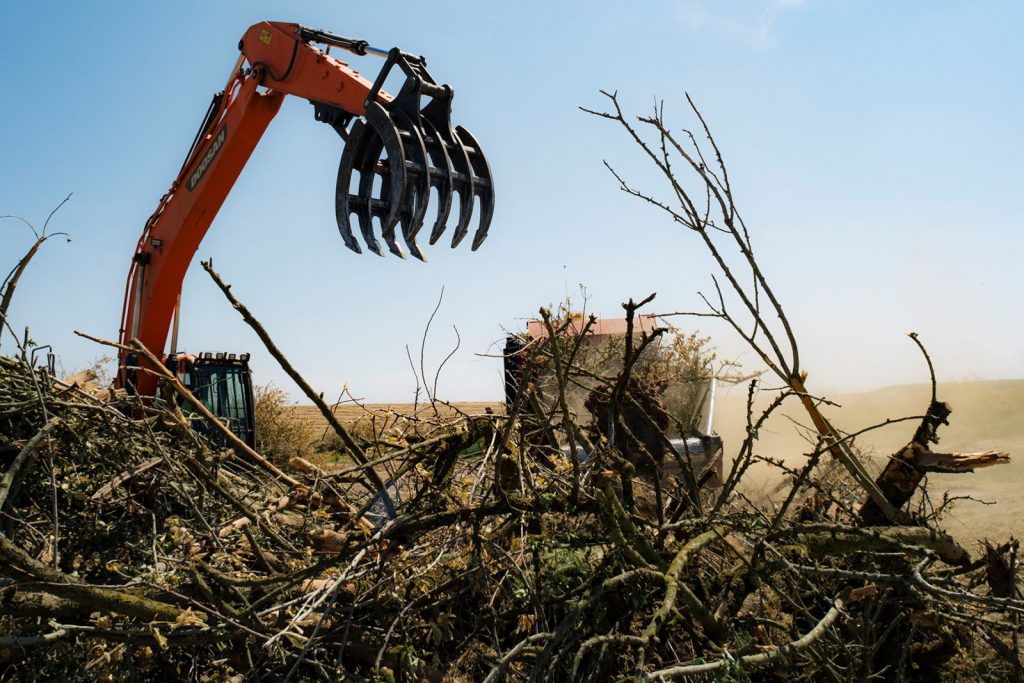
Some of the mini-trees that started their short lives in that laboratory back on the Duarte Nursery ended up in Gary Norton’s 940-acre orchard about an hour’s drive southwest of Fresno. On the April afternoon when I visited, it was reproduction season.
Pistachio sex ed 101: Female trees produce the nuts; males produce the pollen. The world’s most advanced nut-tree breeders have figured out that you need just one male for every 20 females to make a productive orchard. On that afternoon, tree #8 in Block B in the third furrow of Norton’s pistachio field was preparing to procreate. Number eight is distinguishable from the seven female trees to his left, and the 12 females to his right, by his relatively greater foliage and slightly stockier trunk.
Upon #8’s spindly branches are tiny buds, each hosting a reddish green tuft loaded with pollen. Whoosh comes a gust of wind and off flutters the pollen, little white glints of dust surfing the wind toward female blossoms.
If you’re already a pistachio fan, you can offer a perverse thanks to climate change: Pistachio trees require somewhere between one-third and one-half as much water as almond trees. Unlike almond trees, pistachio trees don’t die during extended droughts. Their metabolism merely slows and when water returns, they start producing nuts again. And they can produce nuts for 80 years or longer, almost four times the life span of an average almond tree. Pistachios can also handle, as Duarte’s team discovered, levels of salt that have already killed many an almond tree.
Almonds are not about to disappear, but since 2006, the acreage devoted to pistachios in California has more than doubled, from 150,000 acres to more than 300,000. As it gets hotter and drier, the range of pistachios is expanding northward, as the range of almonds retreats in the same direction. The state will produce about 1.4 billion tons of pistachios by 2024, according to the trade group American Pistachio Growers, a more than 40 percent increase over 2018 harvest levels.
“Almonds are for yourself,” Norton quipped. “Pistachios are for your kids and your grandkids.”
He gestured toward the peaks of the Sierras. “It’s like the fertile triangle here,” he said. “We’ve got mountains, desert, fertile soil, mild climate.”
Indeed, the forebears of pistachios come from Mesopotamia—the fertile river system nourished by the Tigris and Euphrates rivers in the Middle East and the birthplace of agriculture. (Other heat-tolerant crops from the same region, such as pomegranates and figs, are also booming in California.) California farmers have also benefited from the rivalry between the U.S. and Iran, once the world’s largest pistachio producer; tariffs imposed on Iranian pistachios reached 240 percent in 2017, helping California producers compete.
There is one key distinction between the two regions: There is no Tigris or Euphrates River in the Central Valley. Instead there is the San Luis Canal, flowing calmly a few hundred yards away from Norton’s farm, a blue ribbon of water amid the brown earth. Take that and the groundwater away and, well, around here it’s a dry, exhausted desert.
We stood on the edge of Norton’s property contemplating rows of nearly identical pistachio trees. Norton occasionally sprays glyphosate, which does a good job of killing anything green in its path. There was no grass, no underbrush.
“It looks like very little is going on,” Norton said, “but inside those rootstalks there’s a lot going on.” The male trees were shunting nutrients upward to make pollen; the female trees were producing blossoms.
But a problem lurked among these quiet exertions: In previous years, inadequate low-chill hours had caused some of the male trees to mature earlier than their female counterparts. They released pollen before many females were ready to receive it. This mismatch can lead to “blanks”—shells with no nut inside. In recent years, entire orchards have delivered 70 to 90 percent blanks. This year won’t be as bad, Norton thinks, but he’s still anticipating at least 10 percent blanks in his harvest. Though pistachios may be one of the most heat-tolerant crops, even they are vulnerable to disruption by climate change.
And so, farmers are testing another climate change adaptation strategy in the valley. Rather than focus on switching species, it seeks to change how crops are grown.
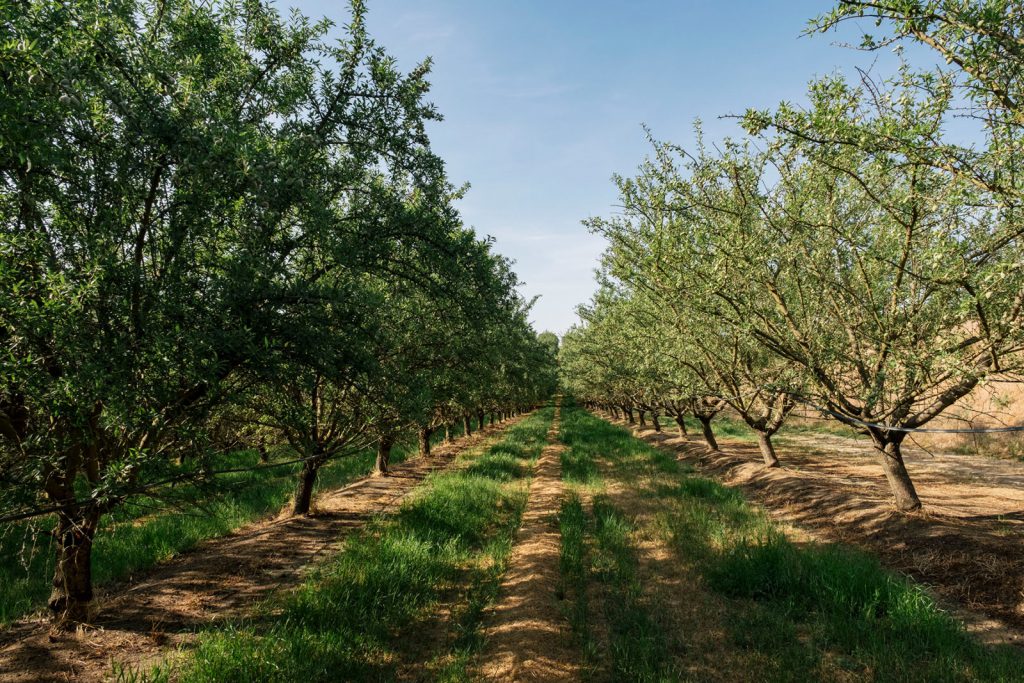
Nina Ichikawa, interim executive director of the Berkeley Food Institute at UC Berkeley, calls them “centers of insurrection.” About five miles from Norton’s pistachio orchard, I visited one such center in the unincorporated community of Five Points—the West Side Research and Extension Center, a sprawl of fields and a couple of Quonset-like huts used for soil testing.
Jeffrey Mitchell, an agricultural extension agent affiliated with UC Davis, has been experimenting for two decades with different ways of enriching the soil to enhance crop health. He’s testing four conditions: tilling without cover crops; tilling with cover crops; no-till without cover crops; and no-till with cover crops. No-till farming seeks to avoid disrupting the soil ecosystem and, where erosion is a problem, to avoid the loss of valuable topsoil by not running a plow through fields. Cover crops are plants grown to enrich the soil, including mustard, fava beans, and radishes.
The last field, Mitchell said, “is the real disrupter here.” Soil from the untilled, cover-cropped field contained far more organic nutrients than soil from the others. It absorbed water better and would thus be more resilient in drier conditions. Farms generally emit more greenhouse gases than they sequester. But the wealth of plant and soil life in that experimental field means it absorbs more carbon from the atmosphere than conventionally grown fields. If widely adopted, such practices could theoretically transform farms into net absorbers, rather than emitters, of greenhouse gases.
Mitchell and his colleagues have also observed other benefits. They’ve consistently found a higher proportion of “bacteriovores and fungivores” in fields that have cover crops—organisms that eat the bacteria and fungi that harm crops. That translates to a reduced need for chemical biocides. The practices also stabilize soil. It doesn’t blow away as easily in the increasing number of windstorms. And they foster microorganisms that strengthen plants’ immune systems, enabling them to fight off pests and diseases with fewer synthetic chemicals. The crops he’s grown on these fields—including tomato, sorghum, garbanzo beans, cantaloupe, and cotton—have yields that are broadly comparable with those of conventionally managed farms.
This approach is often referred to as “regenerative agriculture,” because it’s thought to regenerate rather than deplete the soil. The most immediate benefit of cover crops and no-till may be how they reduce the need for irrigation. To demonstrate, Mitchell filled a long translucent tube with water, then dropped in dirt from the conventional field that was tilled and lacked cover crops. In another water-filled tube, he dropped dirt from the no-till, cover-cropped field, which congealed into a fist-sized mulch and better absorbed the water while the conventional soil dispersed quickly as the water passed through it. Healthy soil reduces water evaporation levels by 4 to 5 inches annually, Mitchell has found. If widely adopted, these practices could reduce water use throughout the valley by millions of acre-feet per year.
Crops grown in such soil may also be more nutritious. Mitchell has been working with Daphne Miller, a physician who studies the links between the nutritional value of the plants we eat and the soil in which they’re grown. “What you see in Five Points,” she says, “is that the plots with the greatest diversity of cover crops had the most diverse microbiome in the soil.” Several studies indicate that a more diverse soil microbiome correlates with more nutrient-dense fruits and veggies.
The CDFA is encouraging these practices. In the past two years, its Healthy Soils program has awarded farmers some $10 million yearly in subsidies to facilitate the adoption of cover crops and other soil-enriching techniques. “It’s a different way of thinking about soil,” says Renata Brillinger, executive director of the California Climate and Agriculture Network. The program challenges the common assumption, she says, that “soil is just the thing that holds the plant up.”
“It is healthy soil that is the actual source of a field’s fertility,” she says.
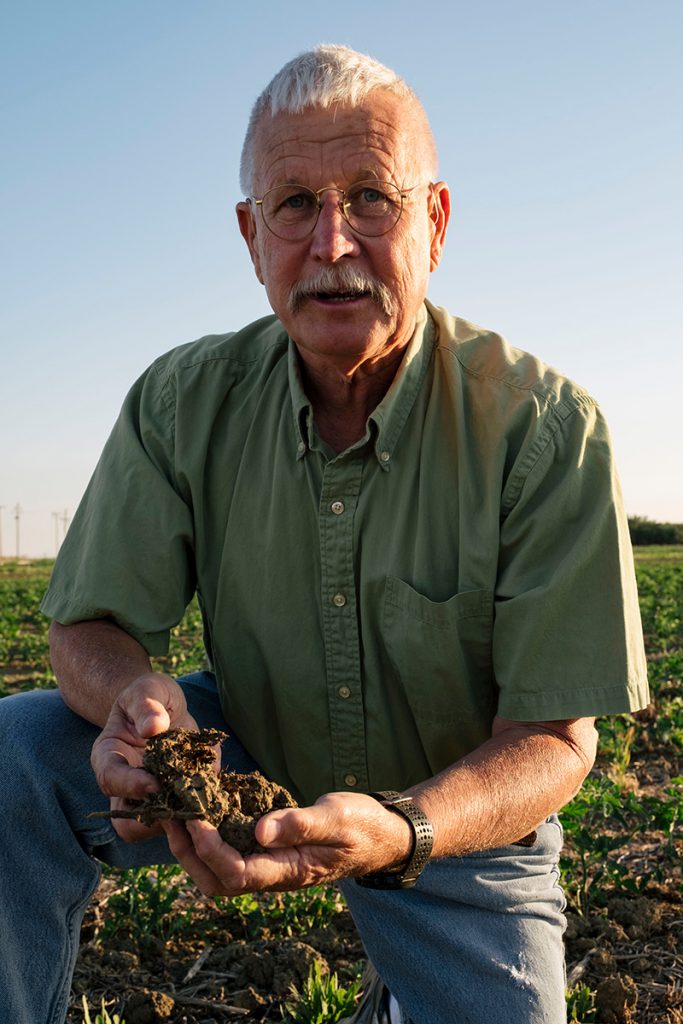
The Burroughs Family Farms support three generations of Burroughs in the valley town of Denair. Fifteen years ago, Ward Burroughs began transitioning his farm from conventional to organic. He and his wife, Rosie, saw that applying the cocktail of chemicals required for a conventional almond farm “meant destroying biology someplace, above or below the ground.” They had become leery of this approach.
In a test plot, organic almond trees seemed stronger than the conventional trees, Burroughs told me. He also noticed that a troublesome pest, the mite, attacked conventional trees more consistently than it did organic trees—which he surmised was because pesticides killed the mite’s natural predators. So the family withdrew several hundred acres from cultivation for three years, to cleanse the land of chemicals that had been applied over decades, and began planting new crops block by block. In 2009, the USDA certified the orchard as organic.
The Burroughs farm represents another trend in the valley. Between 2007 and 2017, the number of acres devoted to organic agriculture in four of the valley’s largest counties—Merced, Tulare, Stanislaus, and San Joaquin—nearly doubled to 58,486 acres. Organic is one of the fastest-growing segments of U.S. agriculture generally, and some organic methods may better withstand climate stresses.
The scene on the Burroughs farm contrasts greatly with the spartan pistachio orchard near Five Points. The rows under the trees here burst with life—wildflowers and cover crops like radishes and mustard plants (good for bees), filagree, and grasses like rye and foxtails, which enrich the soil. “When we quit spraying herbicides, the ground just springs up—grow, grow, grow,” Burroughs says. The land hosts multiple species of birds, small mammals, and insects, many of which prey on pests. The ground is far more absorbent than it once was, he says, reducing dependence on irrigation or groundwater access which, soon enough, will be curtailed.
Growing food this way requires significantly more labor than conventional farming methods. For example, a common pest on almond and other nut trees is the navel orange worm, which leaves its young to hatch in discarded nut shells. Conventional farmers apply pesticides to kill the worms before they hatch. But Burroughs goes through his fields after each harvest with a machine that shakes each tree and knocks empty shells to the ground, denying the pest a hatching location. “We break the nuts and kill the worms,” he says. But the approach requires several days of tree-by-tree labor.
Yet Burroughs is convinced that these practices are more than compensated for by his soil’s greater water absorption and the farm’s enhanced ability to withstand changing conditions. “Because we’re concentrating on soil health,” he says, “we’re set up to be much more resilient.” His yields don’t usually match those of his conventional-farmer counterparts, he concedes, but his net revenues are roughly the same because he doesn’t have to buy expensive chemicals or the machines to apply them.
Scaling up these methods on the many-thousand-acre farms common in the valley presents a challenge. Conventional operations spray with pesticides prophylactically, a practice that regenerative agriculture seeks to avoid. But monitoring enormous fields for pests is a daunting task. New high-tech sensing devices can help farmers better target pests. But physical obstacles also exist: Mae Culumber, the ag extension agent in Fresno, told me that when farmers take a mechanical harvester through an orchard, underbrush complicates the machine’s ability to maneuver. Burroughs’ solution? When it’s not harvest time, he mows the cover crops and then lets cows graze on the felled plants. Their manure further enriches the soil.
Another issue to address is economic. To compensate for the extra labor involved—and the many other “extras” involved in running an organic farm—Burroughs charges a higher price for the food he grows. This is widely referred to as the “organic premium.” Another way to think about it, however, is as a price that reflects the actual cost of producing food. The generally lower prices of conventionally grown food are artificially depressed. Consumers may not pay the full costs at the grocery store, but those costs are still paid by society in the form of impacts to public health from exposure to agrichemicals or the increasingly apparent costs of conventional agriculture’s greenhouse gas emissions.
Food policy reform advocates, including the Pesticide Action Network and Food First, thus call for limiting the billions of dollars in subsidies paid to farmers who pursue destructive agricultural practices.
They also call for directing that financial help toward practices that could reduce such externalities and help people afford food grown with less collateral damage. Hunger in the U.S. is a function of poverty, not the quantity of food produced. The low-wage farm laborers who work amid a bounty of food are among the most food-deprived in the United States. They are also among the first to be directly stung by the shifts underway in the Central Valley, because those changes have a direct impact on farm employment. Which brings us to another major change in the valley—fog.
Nothing is more emblematic of the valley’s ideal growing conditions than its famous tule fog. It rolls across the valley at night, making country roads treacherous to navigate. It also lowers evaporation rates and helps sustain those crucial chill hours, making the Central Valley friendlier to agriculture.
But after years of steadily increasing, the fog has lately been declining. A recent study in the Journal of Geophysical Research: Atmospheres revealed that from 1930 to 1970, the frequency of tule fog increased by 85 percent. Then, over the last 36 winters, it declined by nearly the same amount—76 percent. What happened?
The researchers have a surprising explanation: air pollution. “Tule fog in the valley increased dramatically during the period of rapid industrialization in the valley and in Southern California,” says Ellyn Gray, a Ph.D. student who studies atmospheric sciences at UC Berkeley and lead author on the paper. But since the 1970 Clean Air Act, pollution has declined by over 70 percent. Particulates that once blew into the Central Valley, accruing moisture droplets and creating the fog, are now greatly reduced. That’s good news for Southern Californians’ lungs, but bad news for the agricultural system that has come to depend on fog.
“We’re getting back to the fog baseline we had in Fresno in 1940,” says Gray. In other words—irony alert!—the valley is reverting to a less polluted version of itself.
This reversion dovetails with broader trends as the SGMA regulations tighten and, piece by piece, farmland is taken out of production. The retreat of agriculture could open the door to new possibilities in the valley.
David Orth, who worked for many years with the Fresno irrigation district before joining the state’s Groundwater Council, is now collaborating with the Environmental Defense Fund to ensure that when land is removed from cultivation, the removal occurs with an eye toward restoring lost ecological resources. “If we just take the least productive land out of production,” he says, “we’ll end up with a patchwork of stressed and depleted land.”
The idea, says Ann Hayden, Orth’s collaborator at the EDF, is to ensure that land withdrawals are not done haphazardly, but strategically, “to maximize habitat for diverse species, create corridors for wildlife, and recharge the groundwater.” The EDF is also working on developing ways to pay farmers for ecosystem services provided by rewilded agricultural land—money that could partly replace income lost from the cash crops they no longer grow.
Orth now foresees an array of changes in agricultural practices driven by water scarcity, which will ultimately lead toward a renewed focus on soil health. “During the drought years,” he says, “we had a real tragedy of the commons, with major overdrafts of the reservoir. We ate ourselves alive until the system collapsed.” But with change comes opportunity—a chance to return at least parts of the valley to a condition resembling its earlier state, and to overhaul farming practices to make them less destructive to the soil and human health and more resilient to the challenges ahead.
See the original post on the Bay Nature site here.
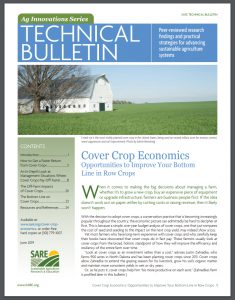
A new USDA report finds that farmers are likely to see returns from planting cover crops within three years if the practice is used to deal with herbicide-resistant weeds, to graze livestock or to reverse soil degradation. The report is based on an analysis of five years of survey data from about 500 farms — the largest multiyear data set that has ever been compiled showing how growers’ yields respond to cover crops, said lead author Rob Myers of the University of Missouri.
The report comes as policymakers, some farm groups and environmental advocates are encouraging producers to adopt the practice because of its environmental and climate mitigation benefits — such as preventing soil erosion, protecting water quality and sequestering more carbon. But an obstacle for farmers has been the added costs, particularly after five years of low commodity prices that have shrunk producers’ bottom lines.
Boosting yields: After the first year of planting cover crops, farmers on average saw their corn and soybean yields increase by 0.5 percent and 2.1 percent, respectively. After five years, corn and soybean yields increased by 4 percent and 5 percent.
Resilience to weather extremes: During the 2012 drought, most farms saw a “significantly bigger” yield boost from cover cropping. Corn yields increased by 6 percent and soybeans by 11.4 percent because of the effects on rainfall infiltration, reduced soil evaporation and improved soil quality.
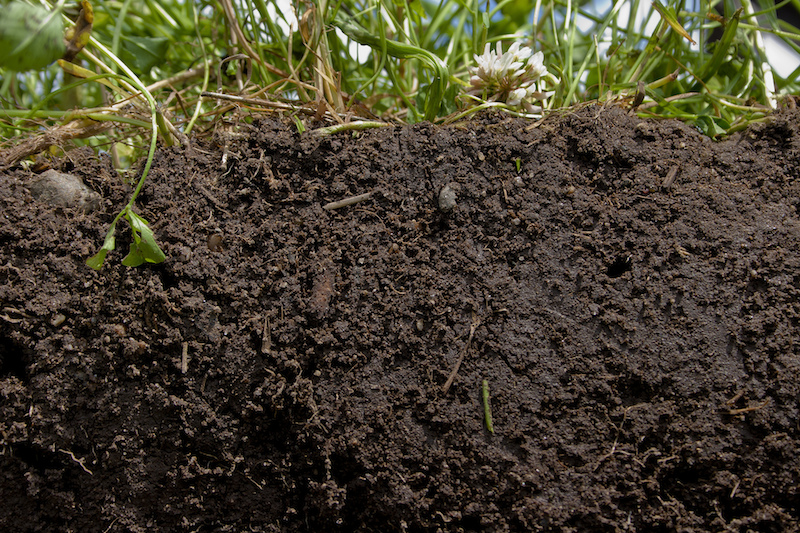
By Laura Reiley
Last month, carbon dioxide levels in the atmosphere surpassed 415 parts per million, the highest in human history. Environmental experts say the world is increasingly on a path toward a climate crisis.
The most prominent efforts to prevent that crisis involve reducing carbon emissions. But another idea is also starting to gain traction — sucking all that carbon out of the atmosphere and storing it underground.
It sounds like an idea plucked from science fiction, but the reality is that trees and plants already do it, breathing carbon dioxide and then depositing it via roots and decay into the soil. That’s why consumers and companies often “offset” their carbon emissions by planting carbon-sucking trees elsewhere in the world.
But an upstart company, Boston-based Indigo AG, now wants to transform farming practices so that agriculture becomes quite the opposite of what it is today — a major source of greenhouse gas emissions.
By promoting techniques that increase the potential of agricultural land to suck in carbon, the backers of Indigo AG believe they can set the foundation for a major effort to stem climate change. On Wednesday, the company announced a new initiative with the ambitious goal of removing 1 trillion tons of carbon dioxide from the atmosphere by paying farmers to modify their practices.
Called the Terraton Initiative (a “teraton” is a trillion tons), the company forecasts that the initiative will sign up 3,000 farmers globally with more than 1 million acres in 2019.
David Perry, the company’s chief executive, says he has lined up a group of buyers who will buy carbon credits — nonprofit groups as well as consumer-focused food companies that could claim their products are not merely carbon neutral, but carbon negative. Farmers will be given training and tools to institute what are known as “regenerative” practices. Indigo scientists will test soil samples for carbon content and farmers will be paid accordingly.
“It’s completely outcome-based,” Perry said. “We don’t really care how you get there. There’s no requirement to be big or small, organic or conventional.”
At the core is the idea that plants breathe, and through the process of photosynthesis turn carbon dioxide from the atmosphere into sugars that become leaves, stems and roots. When a plant dies, decay brings organic material, a component of which is large carbon-based molecules called humic acids, into the soil and binds them to the soil’s molecules. Thus the carbon is “captured” underground. The healthier and more fertile the soil, the more carbon it can store.
The Rodale Institute, a major agricultural think tank, predicts that more than 100 percent of current annual global carbon emissions could be captured with a switch to widely available and inexpensive farming practices — such as not turning the soil over through tilling or plowing; replanting with cover crops after a main crop has been harvested; and rotating through different crops to put a variety of nutrients back in the ground.
Merely planting trees won’t get the world very far. Large and slower-growing trees can sequester more carbon than smaller plants, but the world faces dramatic deforestation and has enormous agricultural needs. Farming seems like a practical focus for how to mitigate growing atmospheric carbon.
Whether they can get to 1 trillion tons of carbon is unknown, Perry says, but this represents one of the largest agricultural experiments lately, with software and satellite tools available to every farmer who signs up. The goal is to find out which crops, practices and geographic locations have the ability to drive more carbon into the soil.
To start, Indigo will pay farmers $15 per ton of carbon, using venture capital raised by the company.
Some farmers have already embraced the techniques. Russell Hedrick, a regenerative grower who farms non-GMO and heirloom corn, soy, barley, oats and triticale in Hickory, N.C., has been measuring the carbon in his 1,000 acres and the best he’s ever done is 1.5 tons per acre.
He says the Indigo incentives could prove strong, especially at a time when farm bankruptcies are high and crop prices are sagging.
Hedrick says that in 2018, an American farmer on average lost about $60 per acre before subsidies, and made just $20 per acre after federal subsidies. So, if a farmer can put a ton and a half of carbon in each acre of soil and get paid by Indigo, they could double their profits.
“For me, that would be $22 per acre, and we farm close to 1,000 acres,” he said. “This is $22,000 for doing what I’m already doing. That’s pretty huge to me as a farmer.”
Hedrick, a first-generation farmer, learned these practices from books and online videos from regenerative farmers. He doesn’t till or plow, and he plants a cover crop within 10 days of harvesting a cash crop like corn or soy, mostly small grains with roots that can go down six feet and reduce soil compaction and help retain moisture.
Indigo is not the first organization to encourage farmers to prioritize putting carbon back in the soil. Iowa farmers tried it in the 1990s and the California Healthy Soils Initiative has an incentives program that funds farmers who use practices such as compost application, mulching, no-till and cover cropping.
Mark Bradford, an expert in soil and ecosystem science at the Yale School of Forestry & Environmental Studies.
“In soil science, there are all these initiatives to rebuild carbon in soil. The problem is measurement and verification — how do we make this economically and logistically feasible?” he said. “What I’m impressed by is [Indigo] has data science PhDs and they’re trying to do peer-reviewable, credible science.”
That said, Bradford said the scientific community has far from a consensus on whether this is the right approach. Some wonder whether it is feasible to change farmer practices to such an extent and whether herculean efforts will result in meaningful atmospheric carbon reductions. Other scientists worry that a focus on carbon in soil will redirect attention away from minimizing greenhouse gas emissions. And still others think that building up carbon could produce more nitrous oxide gas, which is even more warming than carbon dioxide.
“No one has the models or the data to determine who is right yet,” Bradford said. “We have a lack of measurements. [Indigo is] doing the work on the ground to ask if this is feasible.”
Perry said that while most farmers are sustainability-minded, it’s hard to ask them to make sacrifices to sequester carbon for the good of the planet, especially in the face of so many other financial and climatic challenges. Paying them to make this a priority, he said, is the answer.
“It is the only action we can take today whose impact matches the scale of the problem,” he said. “Instead of reducing the speed at which we approach the climate cliff . . . this enables us to start backing away from the climate cliff entirely.”
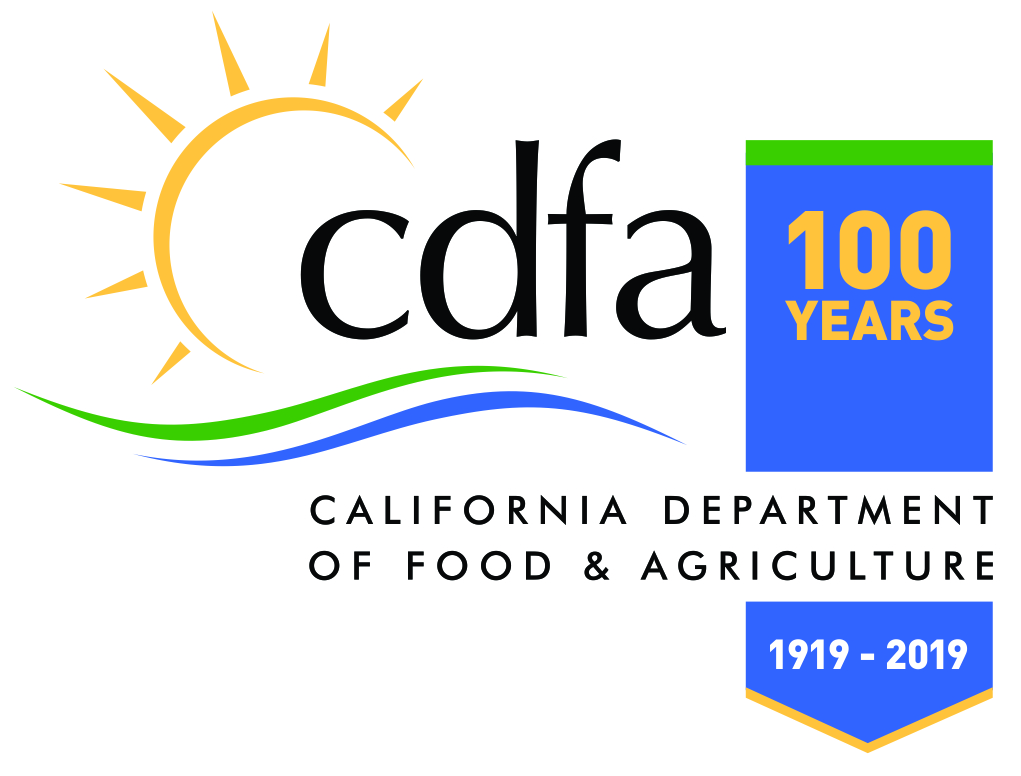
The California Department of Food and Agriculture is celebrating its 100th anniversary as a state agency in 2019. Throughout the year this blog will feature a number of items to commemorate this milestone. Today we continue with the Centennial Reflections video series, featuring CDFA employees remembering their histories, and the agency’s.
Statement from CDFA secretary Karen Ross:

“It was a pleasure to meet with the California Cut Flower Commission board of directors recently. There is not shortage of challenges facing flower growers and I always learn a lot from our discussions.
“They have been blessed with outstanding leadership from their CEO Kasey Cronquist. He is a creative, effective and passionate Ambassador for CA Grown flowers and I am sad he will be leaving the Commission to take on new and exciting adventures in another sector of agriculture. Thank you for your leadership and your friendship, Kasey!”

By CDFA Secretary Karen Ross

An interesting “first” for me, participating in the UN Climate Change Conference in Bonn, Germany. After arriving in Bonn on Saturday, I gave a brief presentation to a meeting of the Global Alliance for Climate Smart Agriculture, with representatives from a great cross-section of countries promoting climate smart ag practices by farmers and ranchers.
We asked the the same question we were asking at our September 2018 climate event in California: how to scale up practices that we know sequester carbon and produce co-benefits like improved water holding capacity for drought resilience, improved nutrient cycling to prevent leaching, and prevent soil erosion. Most important: partnering with farmers and ranchers to adopt soil health practices will secure their long-term productivity and food security for a growing world population!
Tomorrow I speak at a workshop at the conference.
Link to CDFA climate smart agriculture programs

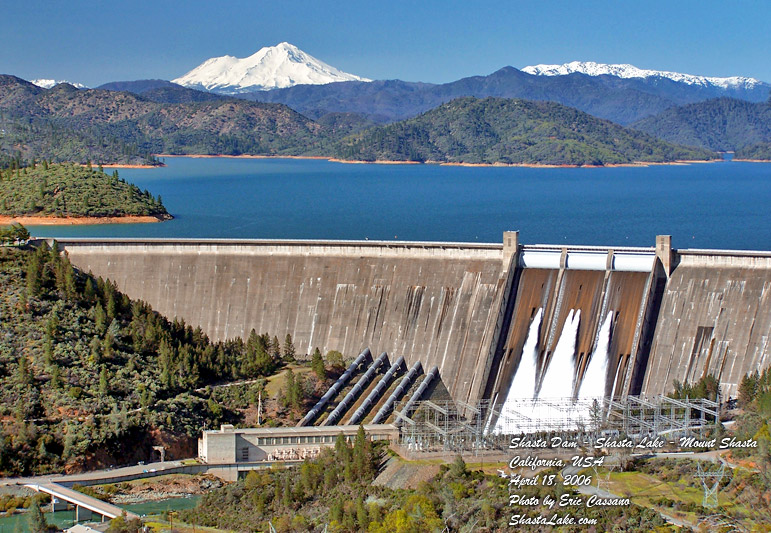
News release from the California Natural Resources Agency
State agencies are asking Californians to help shape a roadmap for meeting future water needs and ensuring environmental and economic resilience through the 21st century.
The effort seeks to broaden California’s approach on water in the face of a range of existing challenges, including unsafe drinking water, major flood risks that threaten public safety, severely depleted groundwater aquifers, agricultural communities coping with uncertain water supplies and native fish populations threatened with extinction.
Input from the public will help the Natural Resources Agency, California Environmental Protection Agency, and Department of Food and Agriculture craft recommendations to Governor Gavin Newsom to fulfill his April 29 executive order calling for a suite of actions to build a climate-resilient water system and ensure healthy waterways.
The agencies want ideas for actions needed now to help California cope with more extreme droughts and floods, rising temperatures, year-round wildfires, species declines, aging infrastructure, contaminated water supplies and changing demands for water. The input will help determine priorities and identify complementary actions to ensure safe and dependable water supplies, flood protection and healthy waterways for the state’s communities, economy and environment.
“Think about California’s diverse regions 30 years from now,” Cal EPA Secretary Jared Blumenfeld said. “What can the state do now to best help people, the environment and the economy thrive even as California’s natural fluctuations grow more variable and extreme?”
Natural Resources Secretary Wade Crowfoot urged Californians to think broadly, given scientists’ expectations that the Sierra Nevada snowpack—source of much of the state’s water supplies—will shrink in coming decades as storms grow warmer. At the same time, sea levels are rising, and warmer average temperatures are affecting everything from soil moisture and wildfire risk to energy consumption and crop patterns.
“Water management is risk management, and our risks are changing,” said Crowfoot. “At the same time, our major water projects are aging, overdrawn aquifers must be brought into balance, and we’re struggling to restore native fish and wildlife populations. We’re counting on California’s water experts and the public to help us identify policies and projects that benefit all water users over time.”
State officials will solicit input through the summer at regularly scheduled and special public meetings of the California State Board of Food and Agriculture, California Water Commission, State Water Resources Control Board, and other state agencies. The state will work with universities, community organizations, water agencies and others to hold workshops and listening sessions around the state.
To see a calendar of events and learn how to provide input directly to the state agency team, please visit WaterResilience.ca.gov. The agencies expect to submit recommendations to Governor Newsom later this year.
“California’s water history shows that the most durable solutions involve collaboration,” said Secretary of the Department of Food and Agriculture Karen Ross. “We’re one state with tremendous regional variety. We urge those of you who know your regions best to look ahead, think broadly, and consider what it will take to achieve regional resilience by 2050.”
Among the questions agency officials are considering:
The agencies encourage groups to work together to submit shared recommendations to the state.